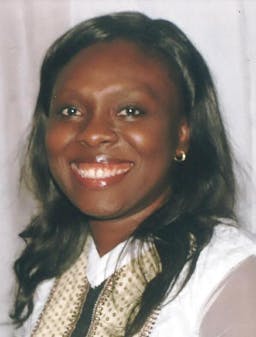Will She Make it? – Equality and Access
May 28, 2019
Story

Equality is as much a question of access as it is about fairness. Access to opportunities is crucial to levelling the field between the genders. Access, more importantly, provides that a person’s circumstances do not detrimentally affect their chances for a better life or in the reverse disproportionately confer an advantage that perpetuates inequality.
While the No Ceilings: The Full Participation Report 2015 (http://noceilings.org/about/) i.e. the ‘No Ceilings Report’, begins with a positive note that ‘[T]here has never been a better time to be born female,’ it also presents data and evidence that shows that we are still a long way to closing the gaps in all areas and for all women and girls worldwide.
Education is a right
Article 12 of the protocol to the African Charter on Human and Peoples’ Rights on the Rights of Women in Africa (i.e. Maputo Protocol) states extensively the obligations of State parties to the protocol (currently 36 out of 54 African States, See: www.soawr.org). In particular, Article 12(2) urges positive actions by government in the areas of:
a) Women’s literacy; b) Education and Training for all particularly in the fields of science and technology; c) Girls enrolment and retention programmes for schools and support for those who leave school prematurely.
Access to education offers girls the greatest opportunity to rise above poverty and live a more fulfilling and healthier life. The reality for many countries in Africa is that while primary school enrolment and retention for girls is almost at par with boys, there is a wider gap in secondary schooling (No Ceilings Report p.10)
The lottery of birth
Where and when one is born is a stroke of luck. But we find that this crucial timing has an impact on not only survival but access to opportunities. This is very evident for example when you compare women and girls equality rights in countries in Western Europe compared to those in Africa. However, more often than not the differences within different groups of women and girls in one country can be so far from the picture displayed at the global level. This is because even in a country with dismal women’s human rights records, there are some women who have better protection and more access than others.
Looking at the data available for Nigeria, it is clear that boys and girls from rich families have over 90% completion rate in primary and secondary schools. Children from poorer families have a lower secondary completion rate of about 45% for boys and shocking 15% for girls. (No Ceiling’s Report, p11). Nigeria is a large country with an estimated population of about 170 million people. There are regional differences in the 6-geo political zones of the South-West, South-East, South-South, North Central, North-West and North-East. It will help to interrogate regional differences to have a clearer understanding of the education challenge. Therefore as a girl, your options for education is dependent on where you come from – the North or South; and if your family is rich or poor.
When in April 2014 over 200 girls were abducted from a secondary school in Chibok, Borno State in Nigeria by Boko Haram – It shattered some of the gains made in education of girls in Northern Nigeria. As many families reacted to the abduction by keeping their daughters at home. Compared to the South, the North has higher levels of poverty. The Gender in Nigeria Report 2012 (http://bit.ly/1A3cxrR) states that poverty level in North-Eastern Nigeria was 72% compared to 26% in the South-Eastern part of the Country. Poverty including more restrictive religious practices and higher incidences of child marriage in Northern Nigeria meant that girls were more likely not to complete secondary school in Northern Nigeria compared to girls from the more liberal and more developed South of the Country.
In fact, many families from Northern Nigeria believed that the best way to protect their girl children from illicit sex and harassment was to keep them at home. The abduction of school girls and the recent rescue of women and girls at a Boko Haram hideout in Sambisa Forest (http://bit.ly/1FnyvYz) has increased fears for women especially girls safety. These considerations will have to be put in perspective when designing education drive or retention programmes to increase parents’ confidence in the education system and provide safe and secure spaces for girls in schools.
The year is 2015 and two girls are born 1 January 2015; Khadija to a family of eight in a village in Yobe State in North-East Nigeria while Ifeoma is born to a family of three living in the suburbs in Imo State in South-East Nigeria. Both have the opportunity to gain from the work done on gender equality and women’s human since 1995 and even earlier. However the reality is that both will have different access and the circumstances of their birth has determined to a large extent who will have an easier route to equality.
Conclusion
Inequalities exist even within the same group. We must recognise that women and girls are not a homogenous group and policies and interventions should be flexible and innovative enough to cater to the needs of such a diverse group.
A first step is providing primary and secondary education for free or at a highly subsidized rate by the State. The quality of public education is dependent on investment and investment in women and girls have a multiplier effect (No Ceilings’ report 2015). Next is to ensure that places of learning are safe and secure for girls. An enabling environment where there is no fear of humiliation, violence, abuse will ensure that girls thrive, stay longer in school and entrench principles of gender equality. Having a good education opens doors, is empowering and the entire society benefits.
Will Khadija make it? This depends on how we hold our governments accountable for the promises they have made and the regional and international human rights treaties they have signed. It also means that we recognise that Khadija requires more support to succeed and therefore school programmes should be designed to include programmes for vulnerable girls and training for educators, teachers and support staff on monitoring performance and retention of girls in school.
Everyone desires a better life; education provides one of the most effective tools for achieving that.




